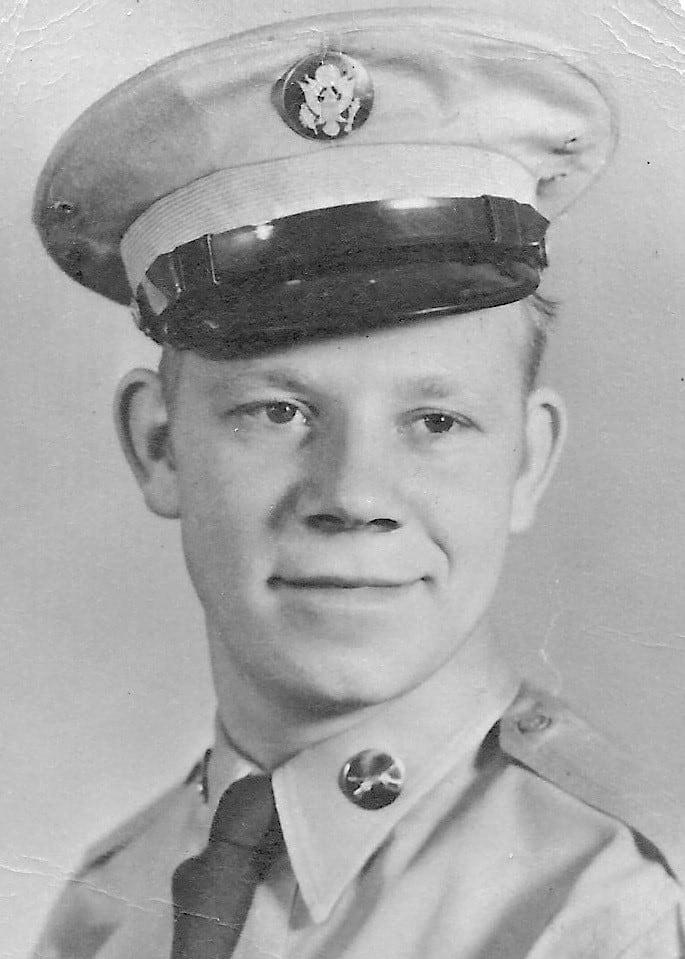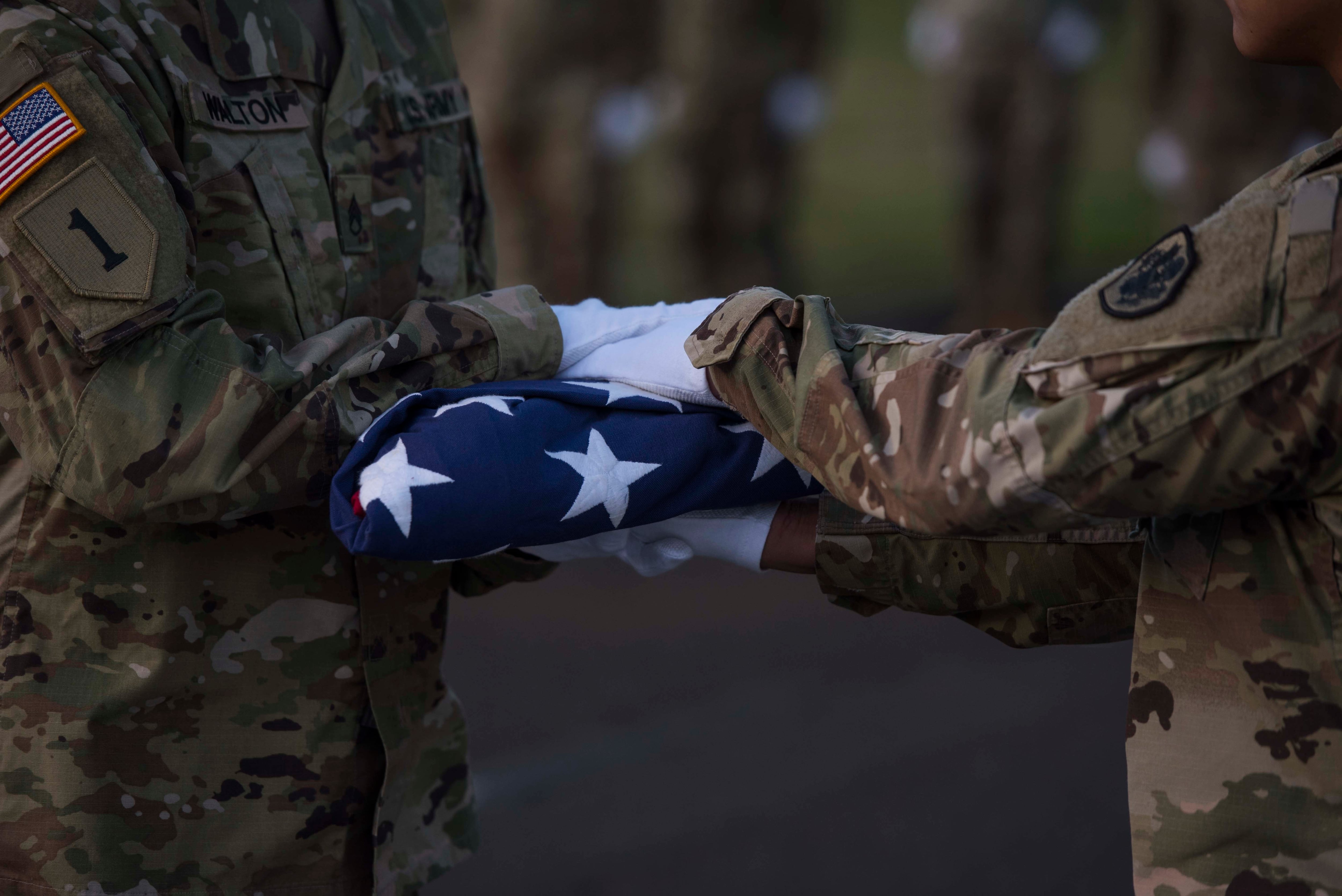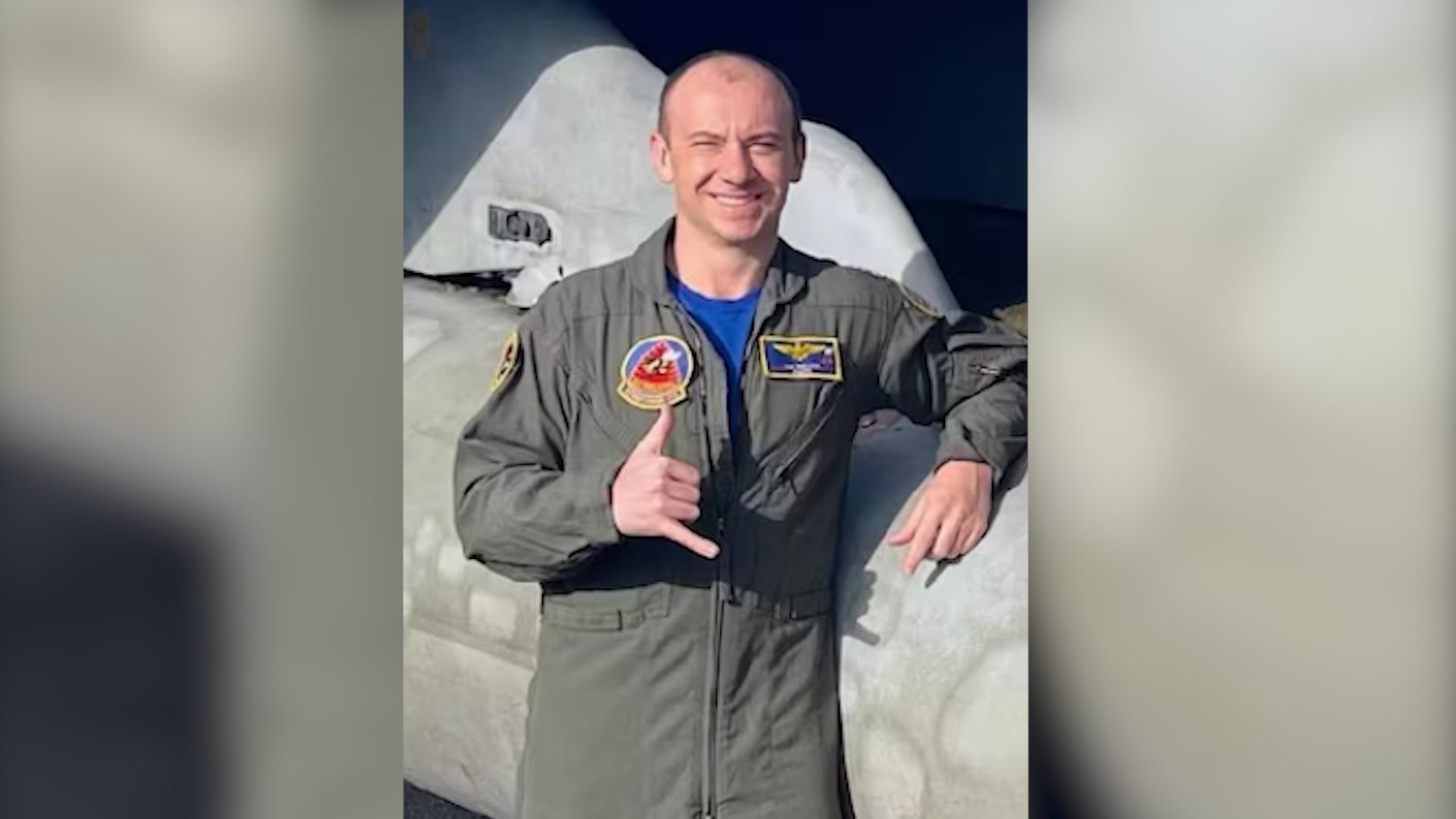“Dan was my first love and my first grief,” Brenda Lott said, as she spoke to families who’ve spent decades searching for answers about their missing loved ones.
In a crowded hotel conference room in northern Virginia, Lott, 79, spoke at an annual government briefing in mid-August designed to offer updates on the search for missing American service members from the Korean War.
When she was 6 years old, Lott’s 18-year-old brother, Army Cpl. Daniel Dulin, who served with I Co., 3rd Battalion, 187th Regimental Combat Team, was presumed to be killed in action fighting in North Korea. That’s according to the Defense POW/MIA Accounting Agency, which is responsible for recovering missing service members.
But Dulin has not yet returned to his loved ones.
As the nation marks National POW/MIA Recognition Day on Sept. 15, approximately 7,500 American service members like Dulin are still unaccounted for from the Korean War, the vast majority of whom — an estimated 5,300 — are believed to be in North Korea.
But North Korea isn’t cooperating on repatriating American troops, or much at all, leaving Pentagon officials frustrated, and the families of missing loved ones in a suspended state of grief. Pyongyang and Washington hit an impasse back in 2019, mainly over U.S. demands for denuclearization, and the northern regime has refused to reopen talks since.
Retired Air Force Maj. Gen. Kelly McKeague, director of the Defense POW/MIA Accounting Agency, told reporters that they haven’t given up.
“You have often heard the Korean War called the forgotten war,” he said at the August gathering. “It is not.”

Seven decades after armistice, families still wait
The last conversation North Korea had with the Pentagon about search and recovery operations was in March 2019, McKeague said, and the last time the two sides undertook joint excavation work was in 2005.
There were high hopes during various summits between then-President Donald Trump and North Korean leader Kim Jong Un, before the 2019 impasse over denuclearization. Kim has refused to open talks with the Biden White House, while conducting multiple missile tests near U.S. allies in the Pacific region.
And Kim traveled to Russia just this week to meet leader Vladimir Putin. The trip prompted U.S. officials to warn that Kim may sell weapons to Putin for his war on Ukraine in exchange for nuclear or space technology.
Adding to the mutual acrimony: Army soldier Travis King dashed north across the South Korean border in July, and remains in the regime’s custody. North Korea’s state-controlled media reported King blamed racism in the U.S. military for his flight. The soldier had been arrested and jailed by South Korea for damaging a police car, and had been in transit to face U.S. military justice when he escaped the airport and made for the border crossing.
Frank Aum, a senior expert on Northeast Asia at the U.S. Institute of Peace, told Military Times the U.S. and North Korea need to resolve their “diplomatic stalemate” before they can get back on track with humanitarian efforts, like the repatriation operations.
Aum suggested “conciliatory” actions the U.S. could undertake including an “end-of-war declaration.” That would require coordination between North and South Korea, which in 1953 did not achieve a formal peace agreement.
He also suggested dropping the broad U.S. travel ban to North Korea that was first imposed in 2017 after the death of American student Otto Warmbier, who suffered injuries in the North’s custody, and even a reduction in joint military operations that the U.S. conducts with South Korea and other Asian allies to rehearse how they’d repel an attack.
North Korea’s own COVID-19 travel restrictions also present “practical impacts on the effort to restart joint recovery operations in the DPRK,” said Dr. Mike Bosack, deputy secretary of the United Nations Command Military Armistice Commission, in an email. “But we are examining the recent relaxation of the DPRK’s COVID restrictions for opportunities to resume engagement.”
Still, the Pentagon’s recovery agency uses both the U.N. Command and U.N. diplomatic channels to try to reopen talks on recovery and repatriation, said Ashley M. Wright, a recovery agency spokesperson.
“For human remains recovery operations that occur along the DMZ (demilitarized zone), United Nations Command utilizes Armistice channels to communicate to the KPA (Korean People’s Army) about the planned activities,” Pentagon spokesperson Lt. Col. Martin Meiners told Military Times via email.
Identifying those who have made it home
The work of identifying remains goes on, despite the impasse, with dozens of remains returned during that brief period of rapprochement during the Trump administration.
Veronica Keyes, a forensic anthropologist and the Korean War identification project leader, was one of four scientists who traveled to North Korea in 2018 to collect 55 boxes of remains, containing an estimated 250 troops. Only 88 have since been identified.
In the 1990s, North Korea turned over an additional 208 cases with approximately 700 individuals, some of which also still await identification.
The recovery agency is also identifying troops who were buried in anonymous graves at the National Memorial Cemetery of the Pacific, also known as the Punchbowl, in Honolulu, Hawaii. They’d been returned after the 1953 armistice, in what became known as Operation Glory. Keyes said his agency is disinterring the cemetery’s roughly 866 sets of unknown remains. So far, scientists have exhumed 572 and made 204 identifications, via dental remains, chest radiograph comparisons or DNA fragments.
In August, the recovery agency announced that 21-year-old Pvt. Alvin D. Thurman was identified from remains disinterred from the Punchbowl, and 23-year-old Cpl. Francis James Jury was identified from the 55 boxes North Korea turned over in 2018.
RELATED

Finding ‘Danny Boy’
Those discoveries offer some comfort to family members like Brenda Lott, whose brother Dulin was reported killed during action near the North Korean town of Opar-ri on October 21, 1950.
She told Military Times that he was interred in a U.N. military cemetery near Pyongyang; but his remains were not identified among those initially returned to the U.S. in the years following the armistice. So, there’s a chance he’s already come back to the U.S., in the remains yet to be identified. Or, he might still be out there.
Lott journeyed to South Korea in 2016 with other relatives of service members missing in action, in hopes of finding him.
“I never really realized the true depth of my grief until I was there,” Lott said. She still treasures a tattered photo of her brother that stayed in her billfold until she had children of her own, and she gets sentimental when she hears one of their favorite songs, “Danny Boy.”
“It’s like finishing a sentence,” she said. “We just need the period to put on it when we get their remains.”
Jonathan is a staff writer and editor of the Early Bird Brief newsletter for Military Times. Follow him on Twitter @lehrfeld_media




